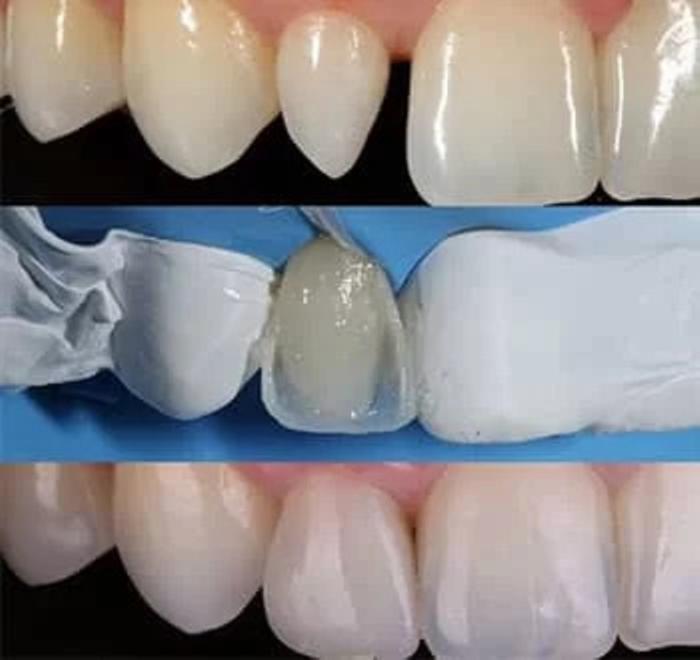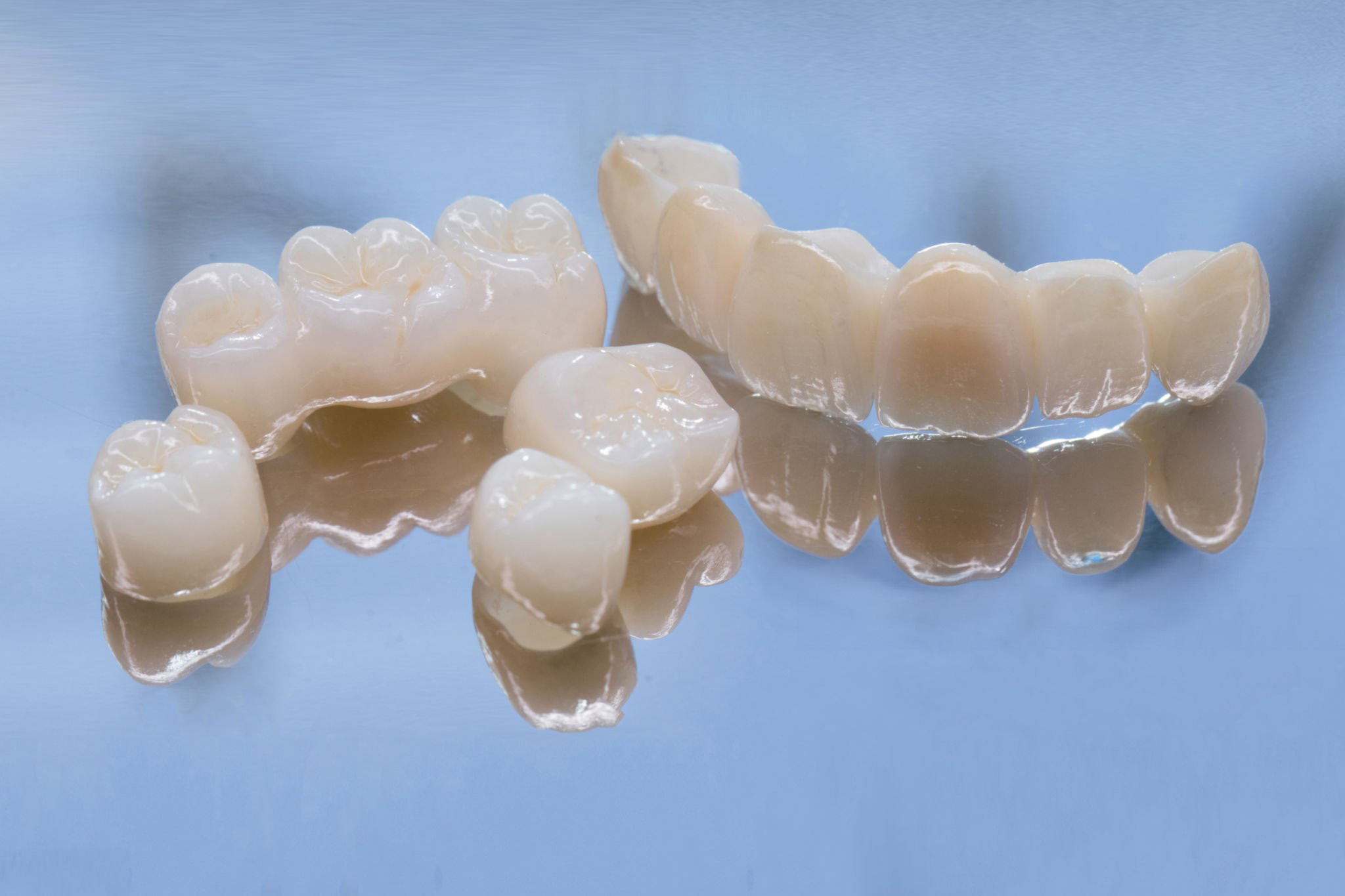
Composite veneers are becoming more and more common as this industry's technology develops. There are dozens of companies that provide dentists with resins that vary in type and property. The area of application and the expected lifespan of a composite resin are determined by its four main characteristics: abrasion resistance, cracking resistance, colour stability, and mechanical strength. Several companies, including Ivocular Vivident, 3M, Dentsply Sirona, and GC America, hold a significant market share in this industry that features various kinds of these four characteristics.
There are two basic ways to apply composite resins: directly and indirectly. Now, let's analyse these two forms of utilisation and illustrate the importance of a dentist's experience in applying composite veneers. We offer a detailed perspective from a dentist's viewpoint, revealing unique insights into the nuances of these methods.
Direct Composite Veneer Applications

Direct composite application is the procedure where composite resins are moulded and hardened within the mouth. The dentist's expertise and knowledge are crucial to the treatment's success since most of these procedures are performed under his supervision. The following is an in-depth examination of what is necessary for direct composite veneer application to be successful.
Basic Structure of Composite Resins
In order to achieve the desired aesthetic and durability values, dentists apply composite veneers based on brand and active ingredients. Composite veneers are primarily composed of the following three elements.
- Resin Matrix: Resin matrix is a polymer-based structure that forms the basis of composite resins. This matrix enhances the flexibility and processability of the composite. It also determines the overall hardness and durability of the composite.
- Inorganik Phase: The inorganic phase refers to the fillers present in composite resins. This phase increases the mechanical strength, wear resistance and thermal properties of the composite resin. It is also important to improve the aesthetic properties of the resin (e.g. color and opacity).
- Binding Agents: Binding agents are chemical substances that bind inorganic phase particles to the resin matrix. These agents ensure adhesion between the fillers and the resin matrix, preserving the integrity of the composite and preventing problems such as cracking or separation.
When placing the composite veneer, the dentist should think about the veneer's thickness, how it will look, and how well it will function, based on his evaluation of the brand he uses. For composite veneer applications, the anterior and posterior regions require different specifications.
Posterior Composite Applications
Due to the higher stress exerted on the teeth, particularly in the posterior region, it is necessary to use sturdy veneers in these areas. The rear regions' composite materials stand out for their rapid filling characteristics and enhanced durability. These resins have a high application thickness, which makes it difficult to achieve the desired aesthetic appearance and calls for careful application.
Anterior Composite Application
Applications in the anterior regions typically prioritise aesthetic appearance. Even though the dentist can easily attain the desired aesthetic appearance, achieving the desired wear resistance will pose a significant difficulty in these areas due to the low application depth.
Currently, nano hybrid composite fillings are commonly chosen for the front areas due to their strong durability and ability to achieve the desired aesthetic look.
Challenges of Direct Veneer Application
You might not need to be familiar with every aspect of applying composite veneer as a candidate. Nevertheless, we have compiled a list of some of the challenges dentists face throughout the application to better highlight the importance of their role in this seemingly simple treatment.
- Composite veneers are unlikely to succeed without thorough sterilisation, especially from saliva contamination.
- Sharp surfaces in composite veneer applications need to be filed down. Failure to do so may lead to composite filling stress and eventual loss of the filling.
- The effectiveness of the treatment depends on proper polymerization, or light-induced hardness. Due to the decreased light resistance in dense applications, the dentist should well know the power of the light and application time.
- Although liner applications thicker than 0.5 mm may impair the adherence of the composite application, they are important for deep composite veneers.
- Composite veneers can be custom-colored by having the dentist place darker overlays on the bottom and lighter overlays on top.
- Patients with bad oral hygiene, heavy smokers, and heavy drinkers have a low success rate with composite veneers. Prior to execution, the dentist need to contemplate these potentialities.
Indirect Composite Veneers

As the name implies, indirect veneers are made using composite resins, but the preparation process takes place in a controlled laboratory setting. Similar to how ceramic veneers are prepared, the teeth are cleaned and formed before the measurement is taken. Just like with porcelain veneers, this technique may involve scraping the teeth in order to refine their alignment. Following the completion of the necessary preparations, the patient's mouth is measured. Modern CAD CAM systems eliminate the need to make moulds, allowing patients to receive their veneers in two visits in one day.
Pos of Indirect Composite Veneers:
- The preparation phase of indirect veneers is carried out in a laboratory, which allows for a significantly stronger polymerization process. This produces longer-lasting effects in comparison to direct application methods. Due to the reduced likelihood of microleakage in indirect applications compared to direct compositions, secondary caries formation is less likely to occur.
- As compared to direct composites, indirect applications are more resilient and rigid. While the typical wear resistance of direct composites ranges from 75 to 100 µm per year, the hardness value for indirect applications exceeds 100 µm.
- There is a marked decrease in post-treatment sensitivity in indirect applications compared to direct ones.
- The compositions' wear resistance is enhanced by reducing particle size and using a high filler rate.
- The duration of the patient's stay in the seat is significantly reduced.
- Achieving the proper colour tone is easier in indirect applications.
- It is not feasible to gauge the required light resistance for direct applications. However, the required hardness can be accomplished in a controlled laboratory setting for indirect applications.
Despite significant advances in dental technology, composite veneers are still inferior to porcelain veneers in terms of durability. However, their ease of installation and maintenance makes them an attractive choice for dentists. Currently, many manufacturers offer hybrid technologies that combine the best qualities of both types of veneers. Hybrid veneers are more durable due to the inclusion of porcelain elements, but they still retain the ability to be easily repaired with composite materials, which is a big advantage if cracks or other damage occur.
